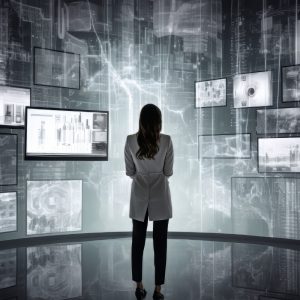How Ukraine’s Battlefield Innovation Is Transforming NATO
As the war in Ukraine enters a critical phase, the country’s defence forces are doing more than resisting a larger adversary—Ukraine’s battlefield innovation is transforming NATO. Across allied headquarters, analysts are tracking how rapid adaptation at the tactical edge—drones, electronic warfare, dispersed manoeuvre, and mission command—has begun to reshape planning assumptions and investment priorities.
Key Facts
- Date context: 26 October 2025 — ongoing Russia–Ukraine war continues to drive allied lessons.
- Innovation vector: mass use of commercial/DIY drones, EW, and software-enabled targeting at low cost and high tempo.
- Doctrine shift: from platform-centric to network-centric effects; emphasis on autonomy and decentralised decision-making.
- Readiness updates: more NATO exercises include EW denial, counter‑UAS, swarm threats, and contested logistics.
- Acquisition trend: faster fielding cycles; greater reliance on dual-use tech, startups and iterative prototyping.
From trenches to drones: tactical innovation on the frontlines
Ukraine’s creativity is most visible in its use of off‑the‑shelf and modified technologies. Commercial multicopters repurposed for reconnaissance, precision strike and battle damage assessment; improvised electronic warfare (EW) techniques to jam, spoof or geolocate; and hybrid command models that blend conventional structure with grassroots initiative have all redrawn assumptions about the modern battlespace. At scale, this is low‑cost, high‑impact warfare: battlefield software, 3D‑printed parts, and smartphone‑based targeting loops that compress kill chains and keep units fighting despite attrition.
These practices demonstrate how agility can offset mass. Dispersed sections using common mapping apps, mesh radios and mission command (intent‑driven orders) strike opportunistically, then relocate before counter‑battery fire lands. In a network‑centric warfare context, where real‑time information flow and manned–unmanned teaming matter as much as armour thickness, Ukraine’s approach reveals vulnerabilities in slow, hierarchical forces—and showcases solutions allies can adopt.
“NATO doctrine is built around predictability and established chains of command. Ukraine is showing that chaos, if well managed, can be a weapon.” [1]
Field improvisation alone isn’t the story; it’s institutionalised adaptation. Units iterate tactics daily, feedback travels digitally, and industry partners ship firmware updates as often as spare parts. That loop—sensing, learning, updating—has become a competitive advantage.
Rethinking readiness: NATO’s strategic transformation
The war has accelerated change across NATO. Exercises increasingly simulate GPS and comms denial, drone‑swarm attacks, and cyber‑enabled deception. The emphasis is shifting from heavy‑platform dominance to adaptability and technological fusion—the ability to plug new sensors, effectors and algorithms into a common architecture and field them at speed.
Allies are revisiting readiness models, logistics and digital infrastructure. Flexible combined‑arms teams with organic counter‑UAS and EW, cloud‑to‑edge data pipelines, and local autonomy in combat decisions now feature prominently in national concepts and NATO planning guidance. The Alliance is also broadening the supplier base: partnering more with startups, universities and dual‑use firms; expanding rapid procurement pathways; and creating sandboxes that mirror Ukraine’s “deploy, learn, iterate” ethic. [2]
Crucially, this is not a pivot away from conventional power but a recalibration. Heavy brigades still matter; they must simply be smarter, harder to target, and better networked. Counter‑battery radars, SIGINT, passive sensors, deception decoys and resilient comms are being treated as core survivability features, not exotic extras. [3]
What it means for force design and procurement
- Layered counter‑UAS as table stakes: handheld jammers, radar/EO sensors, acoustic nets and kinetic options integrated from platoon to corps.
- Software over steel: prioritising common data models, open APIs and sovereign control of update pipelines; buying software‑defined drones and radios.
- Modular payloads: vehicles, vessels and aircraft treated as power/compute buses for swappable effectors (EW, loitering munitions, decoys, ISR pods).
- Contested‑logistics resilience: dispersed stockpiles, mobile repair, 3D printing forward, and autonomous resupply.
- Human–machine teaming: commanders assisted by AI planning tools and edge inference, with tight human‑on‑the‑loop controls.
For readers tracking the technology base, see our related analyses on AI and robotics in land defence and the rise of autonomous maritime vessels, where many of these trends are already visible in industry roadmaps and trials.
Risks, limits and counter‑arguments
Three cautions temper the enthusiasm. First, what works for Ukraine’s existential defence may not directly scale to all allied contexts; political risk tolerance and supply depth differ. Second, mass commercial tech creates signature: cheap radios and drones can be detected and targeted; emissions control and deception must mature in parallel. Third, the adaptation race cuts both ways—adversaries are also learning, and will blend cheap autonomy with long‑range fires to strike staging areas, logistics and C2 hubs.
These caveats argue for a balanced force posture: hard‑to‑find, hard‑to‑kill formations with abundant decoys; sovereign tooling for EW and spectrum manoeuvre; stockpiles of attritable systems; and training that rewards initiative under degraded conditions.
Implications / What’s next
- Doctrine: embed mission command and edge authorisations into allied SOPs; expand multi‑domain deception and signature discipline.
- Procurement: fund rapid experimentation lines and multi‑vendor “fly‑before‑you‑buy” trials; require open, testable interfaces.
- Industry: dual‑use on‑ramps via accelerators and challenge programmes; pre‑negotiated surge contracts for attritable systems.
- Training: routine EW denial in exercises; drone‑swarm red‑teaming; contested logistics drills with forward repair and 3D printing.
In essence, the war has become a real‑time defence laboratory for NATO. The Alliance’s evolution over the next decade will be shaped by how quickly lessons move from the Ukrainian front to allied doctrine, ranges and acquisition cycles.
Further reading
- How AI and robotics drive innovation in land defence
- Autonomous maritime vessels and the new littoral fight
- NATO DIANA and the dual‑use innovation push
- RAND: Mosaic warfare & adaptable force design
References
- Allied Command Transformation: Strengthening NATO–Ukraine Cooperation.
- Sea Power Magazine: Combat Engineering in the Drone Age.
- Small Wars Journal: Ukraine’s Battlefield Drone Innovations.








